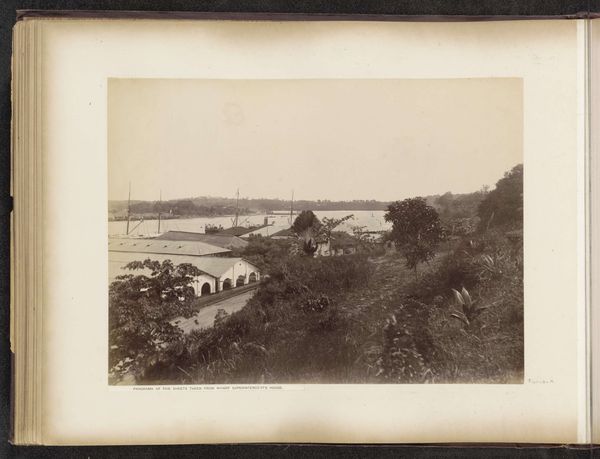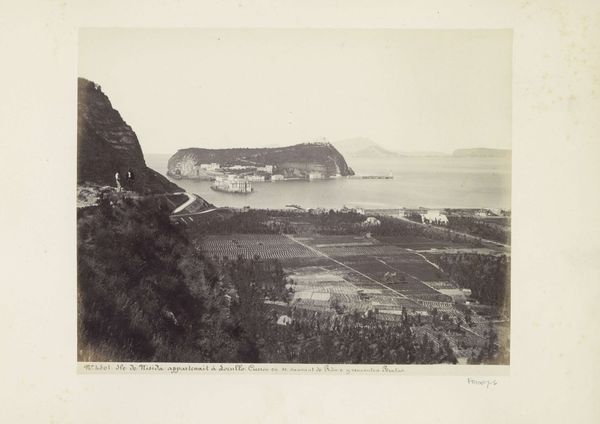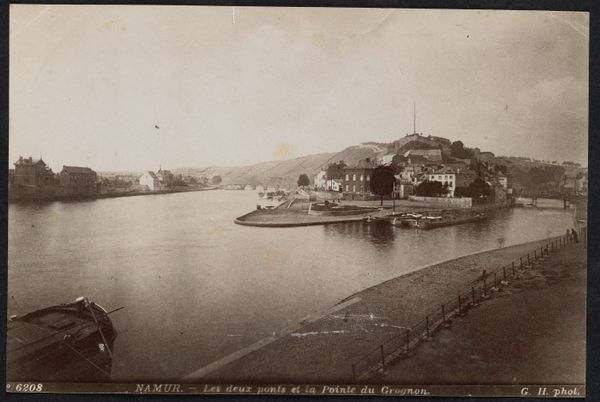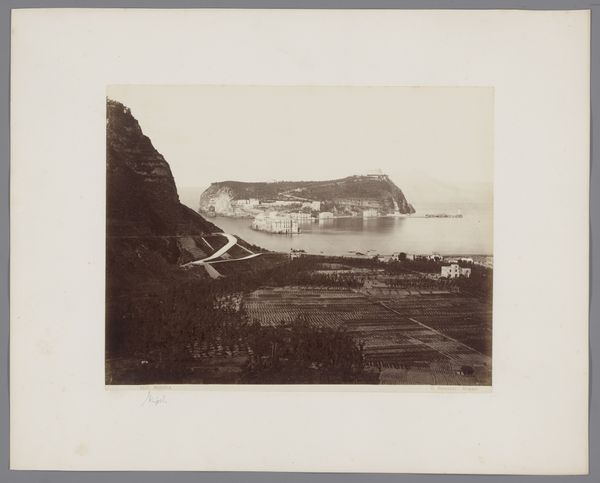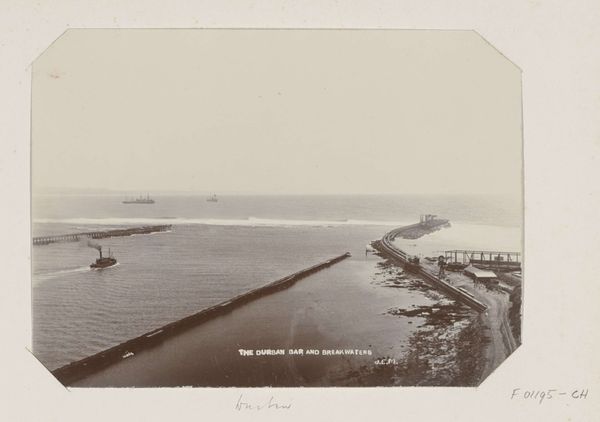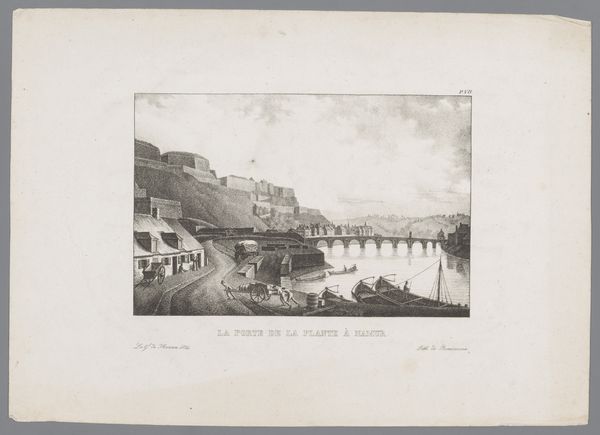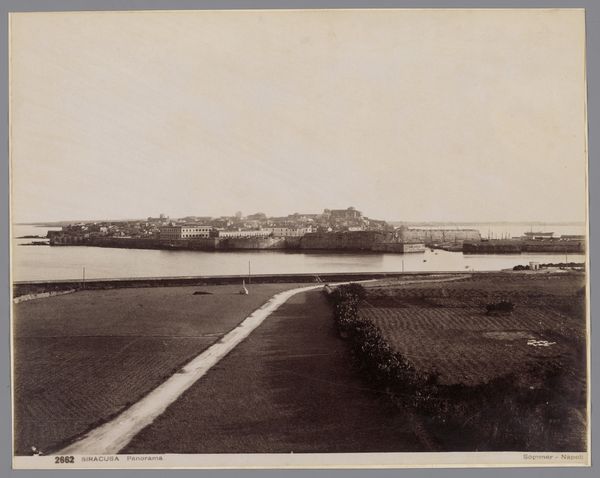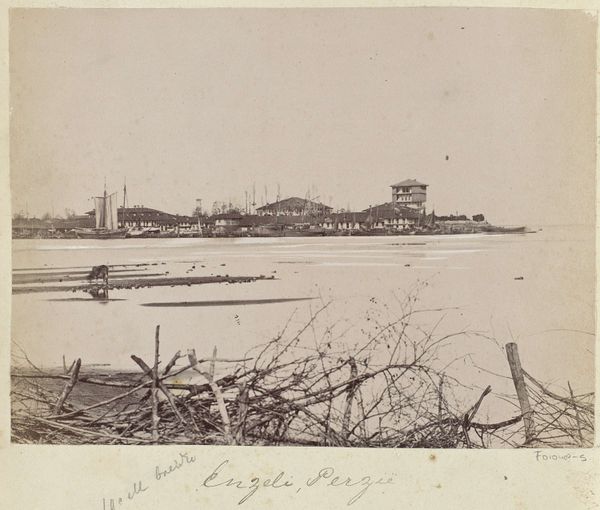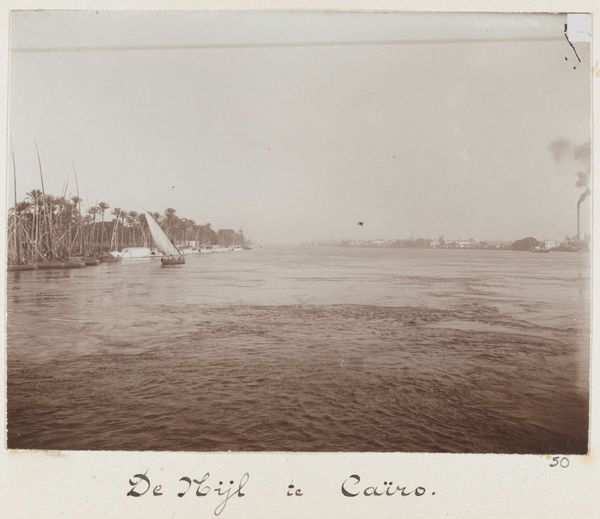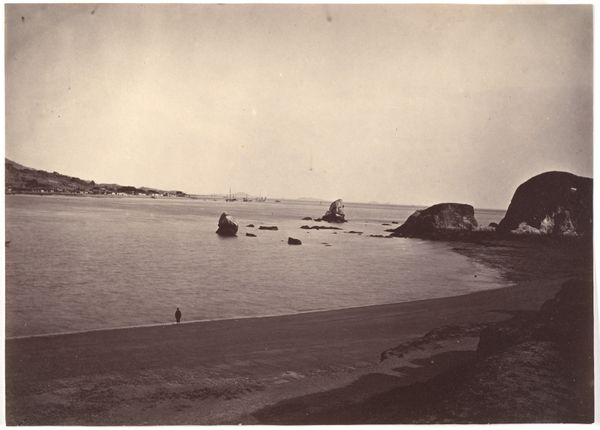
Piramiden van Gizeh, gezien vanaf een weg langs de Nijl bij Caïro 1898
0:00
0:00
photography, gelatin-silver-print
#
landscape
#
river
#
ancient-egyptian-art
#
negative
#
photography
#
ancient-mediterranean
#
gelatin-silver-print
#
watercolor
#
realism
Dimensions: height 79 mm, width 109 mm
Copyright: Rijks Museum: Open Domain
Editor: So, this is "Piramiden van Gizeh, gezien vanaf een weg langs de Nijl bij Caïro," or, "The Giza Pyramids seen from a road along the Nile near Cairo," a gelatin silver print from 1898 by Johannes Lodewijk Heldring. The sepia tone lends it such a feeling of history. What stands out to you? Curator: I am immediately drawn to the labor implied, not just in the pyramid construction itself which, of course, dominated that landscape and its representation, but in Heldring’s photographic process. Consider the extraction of silver, the manufacturing of gelatin, and the transportation of these materials across continents. It’s all embedded here. What socio-economic networks were required? Editor: That's fascinating! I hadn't considered the colonial implications of acquiring the raw materials and the final object being brought back to Europe. Did this process influence how viewers interpreted the pyramids at the time? Curator: Absolutely. The image flattens the complex reality of Egypt into a consumable object, paralleling how European powers extracted resources, both material and cultural. This wasn’t just about seeing the pyramids, it was about possessing their image, mass-producing a kind of simulated experience. The photo then is not just a benign record but also a record of exploitation through consumption. Consider that in contrast with locally made representations and its inherent value, this image circulates broadly through global trade markets. Editor: That makes me rethink the value we assign to these images today. Curator: Exactly! And how the mode of production shapes that perceived value. Thinking critically about the materials reveals the interconnected systems that create and disseminate the "exotic," and that really complicates our understanding. Editor: This is such a different perspective from simply analyzing composition or art historical context! Curator: Precisely. Shifting the focus to the material allows us to unearth broader power structures embedded within even the most seemingly straightforward landscape.
Comments
No comments
Be the first to comment and join the conversation on the ultimate creative platform.

